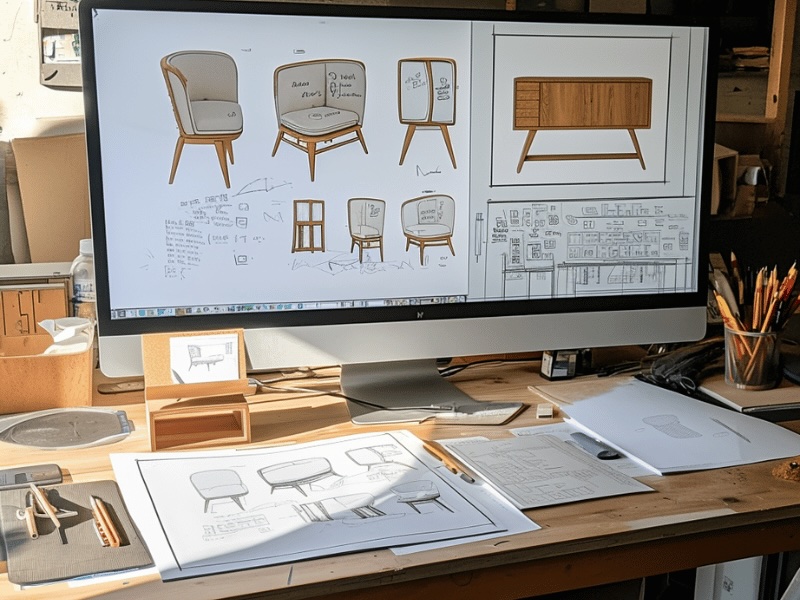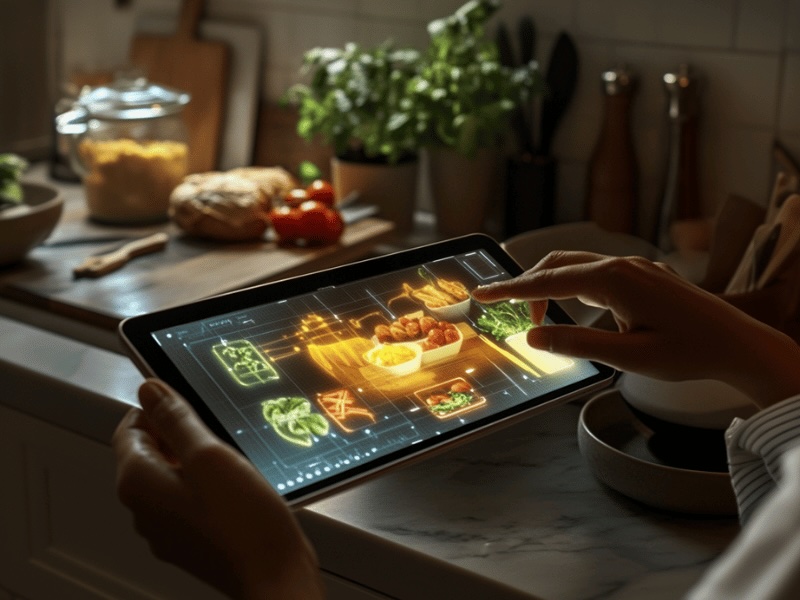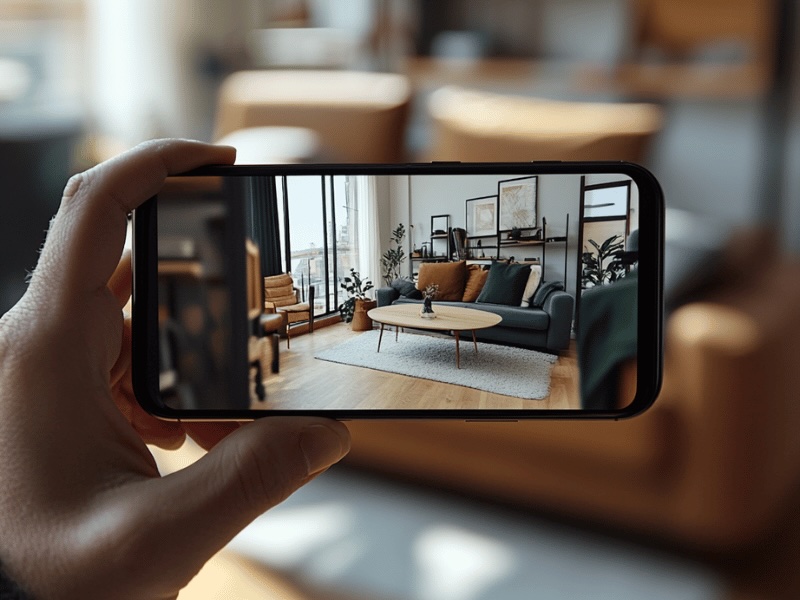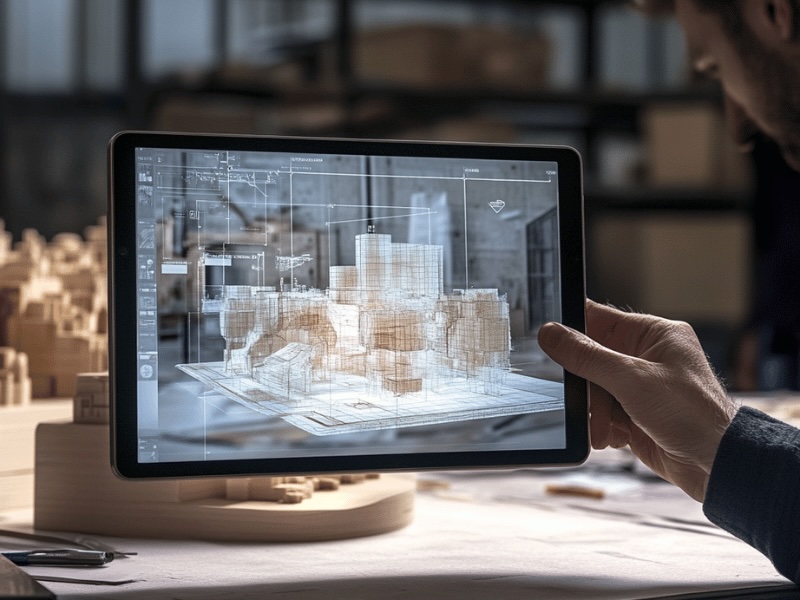Augmented reality has moved beyond novelty—it’s now a core part of the modern product design toolkit.
In my work designing interactive 3D experiences and digital product visuals, I’ve seen how AR helps teams move faster, test smarter, and reduce the friction between idea and reality. Whether we’re mocking up physical products or testing usability in a virtual space, AR is giving designers more control and context than ever before.
And this is just the start.
With AI, 5G, and spatial computing maturing fast, AR is evolving into something far more powerful. This article explores where it’s headed—and how designers can tap into it to build better, smarter products.
As Ronald Azuma, one of the earliest voices in AR, put it: “AR supplements rather than replaces reality.” That’s exactly the mindset we need when designing for it.
Key Takeaways
- AR is shifting from presentation to design tool – helping teams prototype, test, and refine products faster.
- AI-powered AR is like having a real-time design assistant – it flags issues, suggests improvements, and speeds up decision-making.
- IoT and 5G make AR smarter and more connected – enabling real-time feedback from physical environments during design.
- Users are experiencing products through AR before they buy – designers need to build with that virtual context in mind.
- The future is hands-free and spatial – wearable AR will change how we create, review, and collaborate on product ideas.
AR Is Becoming a Design Tool, Not Just a Demo Gimmick

When people think of AR, they often picture flashy marketing or virtual try-ons. But in product design, AR is starting to do some serious heavy lifting—well before a product ever reaches customers.
Need to test proportions? Explore colorways? Check ergonomics? You can now do that instantly in AR, overlaid onto a real environment. For physical product designers, it’s like working with a living prototype.
At NoTriangle, we’ve used AR to help clients spot usability issues, test placement in real-world settings, and even run stakeholder reviews remotely. It cuts the guesswork. Instead of imagining how something might feel in-hand or look in a space, you just… experience it.
And as AR gets easier to access—from phones, tablets, and now wearable headsets—it’s going to become a natural part of the design flow, not a separate step.
For more on how teams are combining AR and VR to enhance every stage of product development, check out our guide on integrating AR and VR in product design.
When AI Meets AR, Design Gets Smarter

AR on its own is powerful. But when you add AI into the mix, things start to get really interesting.
Let’s say you’re refining a physical product. You load it into an AR environment and start playing with shapes, angles, and textures. Now imagine that the system starts helping you—suggesting ergonomic tweaks, flagging weak points, or predicting how materials might perform under stress. That’s what AI-driven AR makes possible.
It’s like having a design assistant who never sleeps.
At NoTriangle, we’ve worked on projects where AI-enhanced rendering helped simulate lighting and material finishes in real-time. Combine that with AR, and clients could “walk around” the product before anything was built—adjusting features on the fly. That kind of feedback loop saves weeks of revisions.
But it’s not just about speed. It’s about better decisions. AI helps AR move from being a viewer to being an advisor—spotting what humans might miss and learning from every design interaction.
For product designers, that means fewer blind spots, smarter testing, and ultimately, better products.
AR Is Getting Supercharged by IoT and 5G

On its own, AR is impressive. But pair it with real-time data from IoT devices and the speed of 5G, and suddenly you’re designing in a live, responsive system.
Imagine this: you’re developing a smart product—say, a home appliance or a wearable. The physical prototype has built-in sensors tracking temperature, pressure, or user interaction. AR pulls in that live data and overlays it directly onto your design, right in your workspace. You see exactly how your product performs, in context, without waiting for lab tests or feedback loops.
That’s not a future concept. That’s already happening.
And thanks to 5G, the lag is basically gone. You can collaborate across locations—your team in Berlin, your engineer in Toronto—tweaking a shared 3D model in AR like you’re standing in the same room. It’s fast, it’s precise, and it opens up a ton of possibilities for remote testing and agile design.
According to Boston Consulting Group, this blend of AR and IoT is already making teams “more effective and productive” by turning sensor data into real-time visual insights—something we’ve seen firsthand on client projects.
We’ve started exploring this at NoTriangle—connecting AR environments to live product data. It’s making the design process feel less like static modeling and more like live problem-solving.
AR in Everyday Life Is Raising the Bar for Product Design

AR isn’t just a tool for designers—it’s shaping the expectations of the people we’re designing for.
From virtual furniture try-ons to real-time wayfinding, people are starting to expect interactive, responsive, and personalized experiences in the physical world. That changes how we think about product design.
Tools like smart glasses are already showing up in logistics, training, and product assembly—proof that AR works even in high-stakes environments. As Harvard Business Review notes, “wearable AR devices … can boost workers’ productivity … even without prior training.” That’s the level of intuitiveness today’s users now expect
Designing a product today doesn’t stop at “does it work?” Now, it’s also: Can it connect? Can it teach? Can it respond in real time? Whether you’re designing a consumer tech device, packaging, or a physical product with a digital twin, AR is part of the conversation.
Even in industries like healthcare, education, or retail—users are experiencing products through AR before they even touch them. For designers, that means creating with context in mind. Your product might be viewed on a kitchen counter, on someone’s wrist, or in a warehouse—all through an AR layer.
At NoTriangle, we’ve seen this firsthand: clients want designs that “feel good” in a virtual environment just as much as they do physically. That’s a shift—and one that’s only going to grow.
What’s Next for AR in Product Design?

We’re just scratching the surface of what AR can do for product design. The next wave? It’s all about wearables, spatial computing, and context-aware design.
Wearable AR devices—like smart glasses—are finally starting to catch up to the vision. And as they get lighter, faster, and more affordable, they’ll shift how we design entirely. Imagine designing a product and being able to review it hands-free, walking around it at scale, layering in live feedback, and tweaking it on the spot.
Add to that spatial computing—where digital content interacts with the physical world in smarter ways—and the line between design and real life starts to blur. We won’t just be designing products anymore. We’ll be designing how they’re experienced.
The best part? These tools aren’t locked away in R&D labs. They’re showing up in daily workflows, in client meetings, in remote design reviews. The challenge for designers now is to adapt fast—and stay ahead of what users will expect next.
Because the moment AR becomes seamless, it stops being a “wow” feature and starts being the standard.
Conclusion
AR isn’t just a bonus feature anymore—it’s becoming a core part of how we design, test, and bring products to life.
Whether you’re working on connected devices, physical packaging, or hardware for emerging tech, augmented reality is shaping how your users will experience what you create. And with AI, IoT, and spatial computing entering the mix, that experience is getting smarter, faster, and more immersive.
At NoTriangle Studio, we work with teams who want to lead—not follow—when it comes to design innovation. If you’re exploring how AR can level up your product development, we’d love to help you get there.
Curious about the specific advantages AR brings to workflows? Read more about the benefits of augmented reality across industries.
Ready to Bring Your Product Designs to Life with AR?
Discover our AR product rendering services and turn your concepts into immersive, interactive experiences—faster, smarter, and more real than ever.
FAQs
The future of AR lies in its integration with AI, IoT, and 5G, creating smarter, more immersive experiences. These advancements will make AR an essential tool across various industries, enhancing both professional and daily life interactions.
AR will enhance everyday activities like shopping, learning, and navigation, making them more interactive and efficient. From trying on clothes virtually to navigating cities with augmented maps, AR will seamlessly integrate into the routines of our daily lives.
AI will be crucial in driving AR’s evolution, enabling more personalized and adaptive AR applications. With AI, AR experiences will become more intuitive, offering tailored interactions that respond to individual user needs and preferences.
Key trends include wearable AR, AR in the metaverse, and cross-platform AR applications. These trends point towards a future where AR is more integrated, accessible, and impactful across various platforms and devices.
AR helps reduce guesswork and speeds up decisions. Designers can validate shapes, materials, and usability in real time, often cutting weeks out of the prototyping stage.
Yes. AR can integrate with IoT sensors to display live product data—like temperature, pressure, or performance—directly onto a 3D model, helping teams troubleshoot and iterate faster.
It’s already starting. Devices like smart glasses are making AR more immersive and hands-free—transforming how designers review, collaborate, and refine their ideas on the go.







